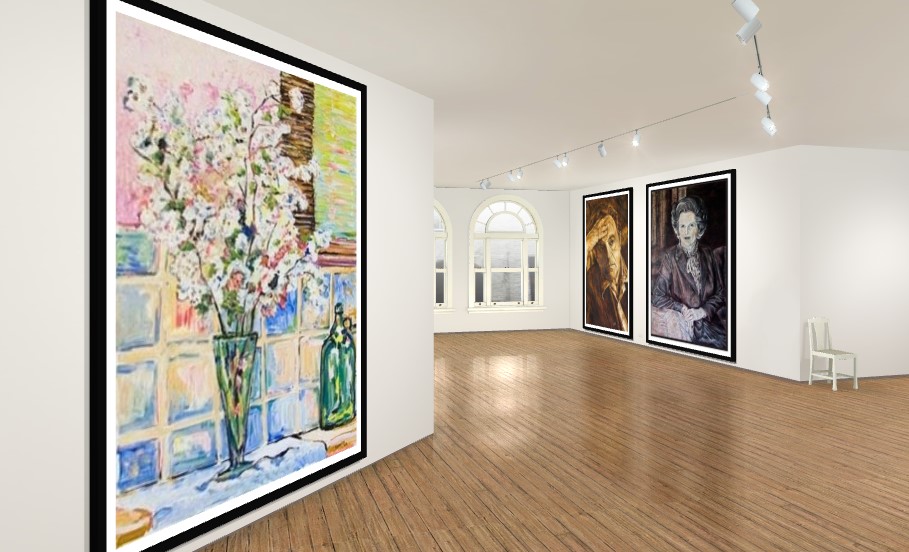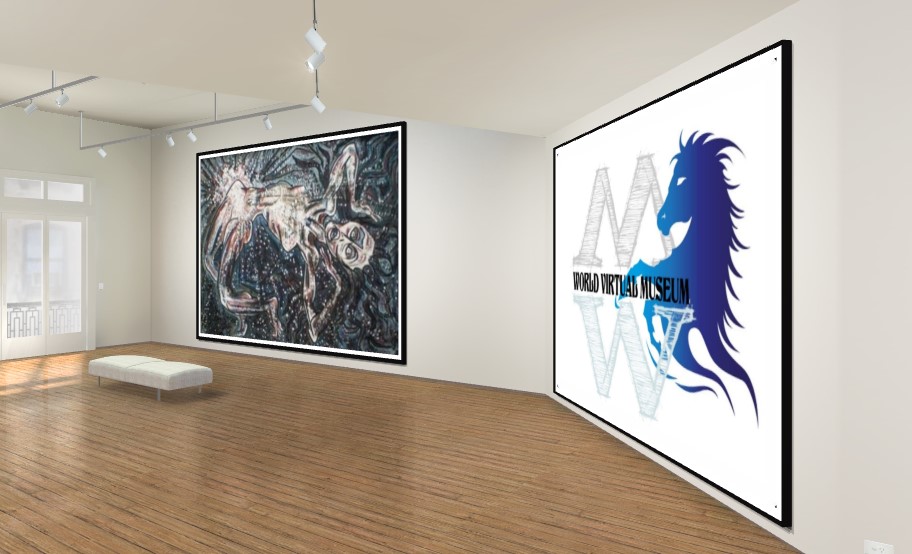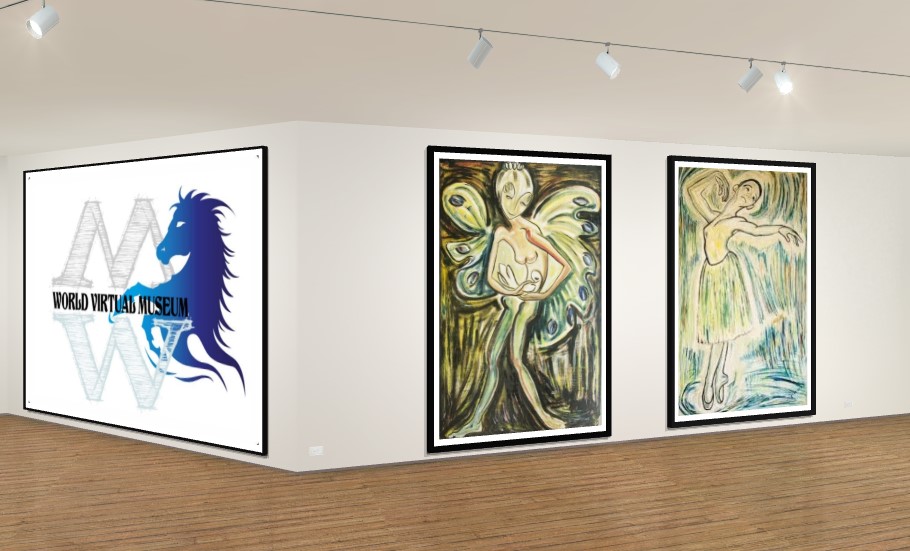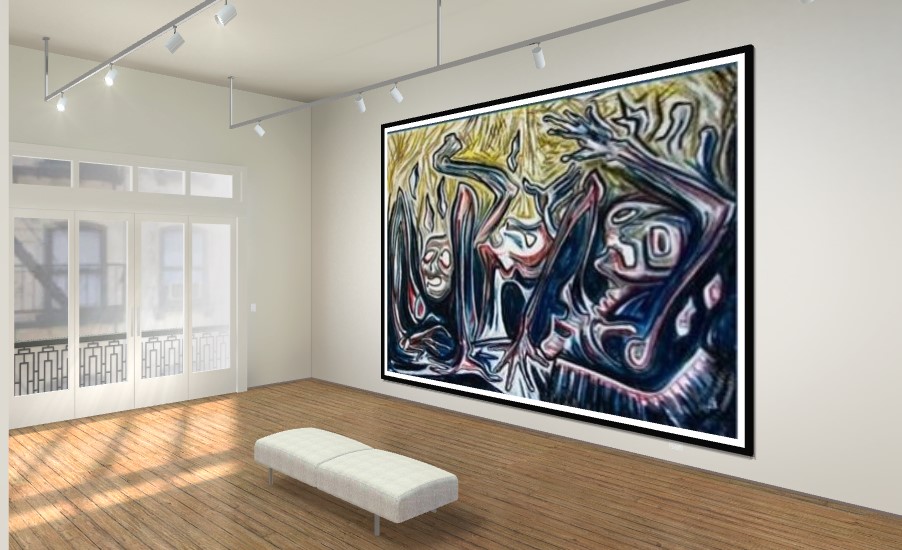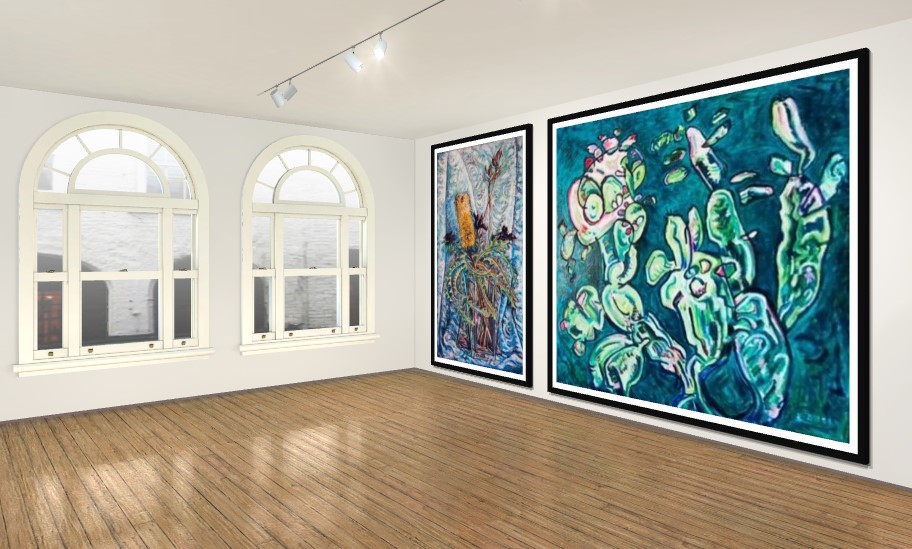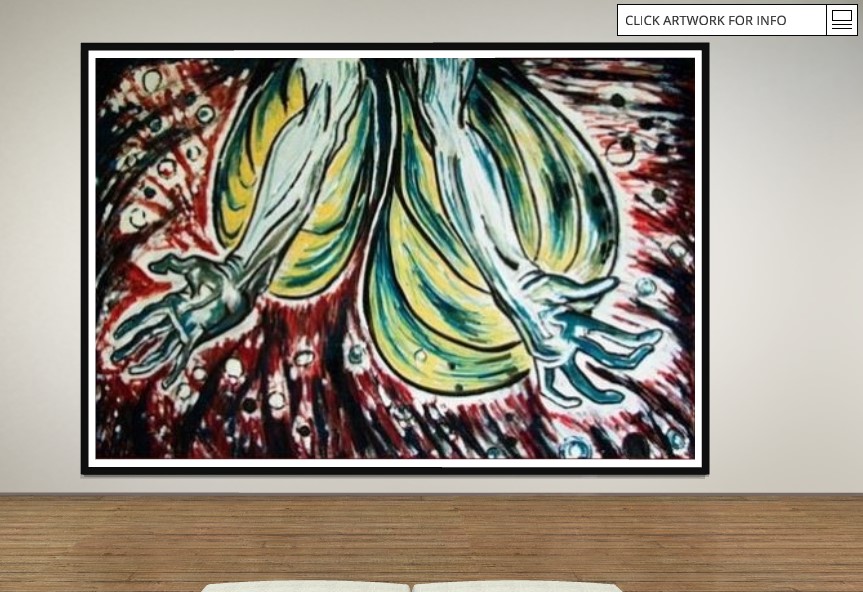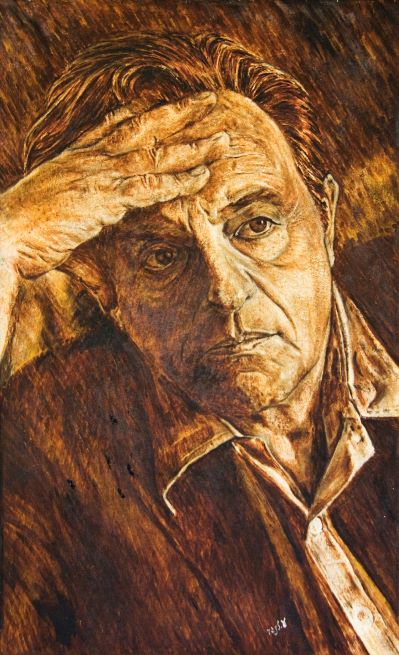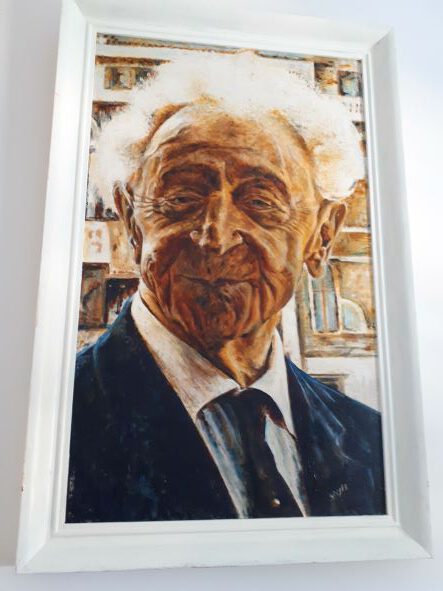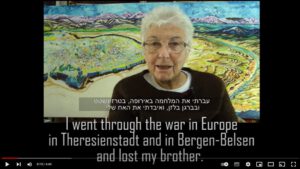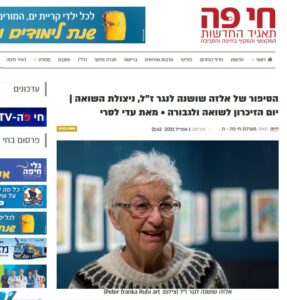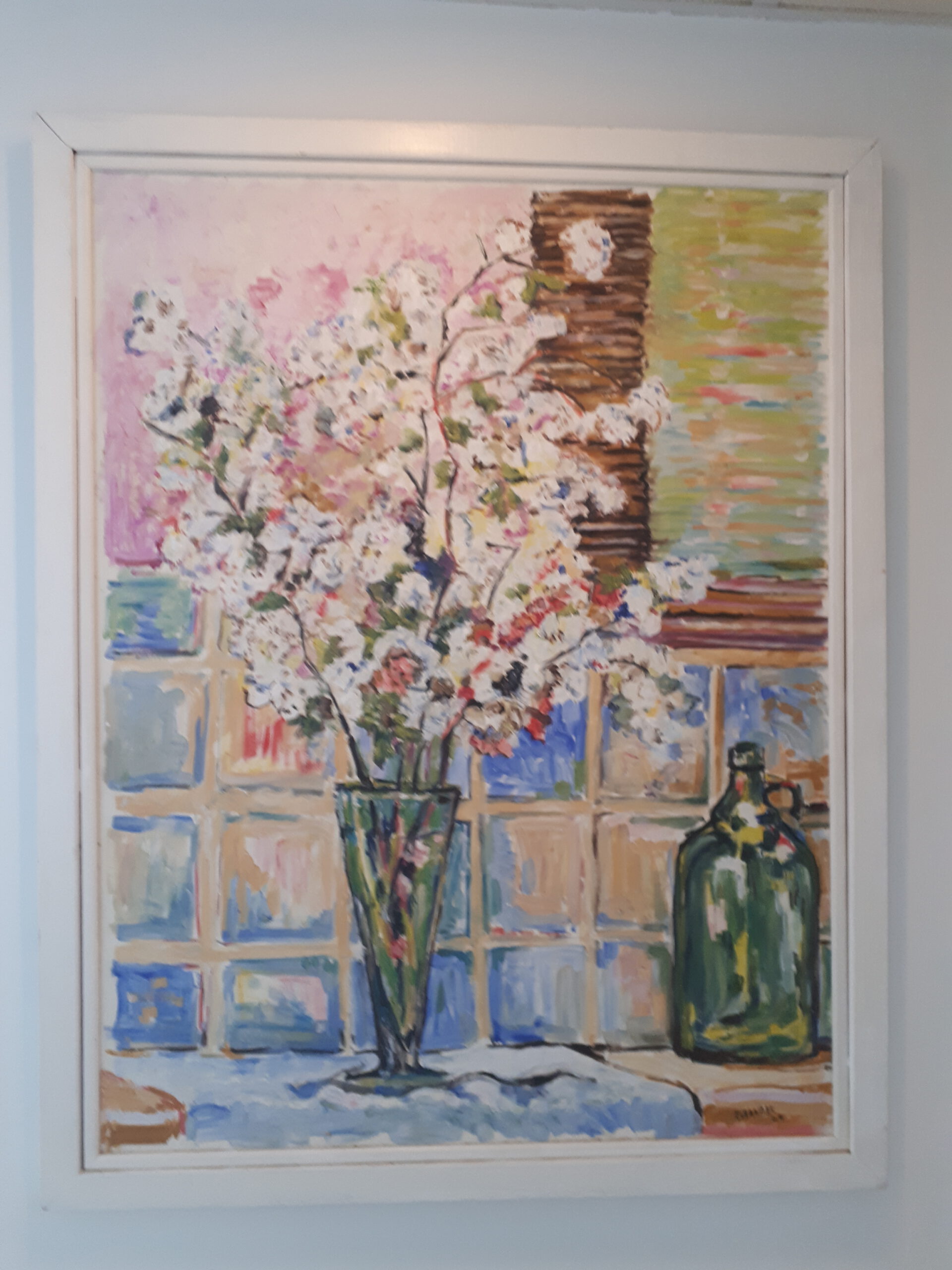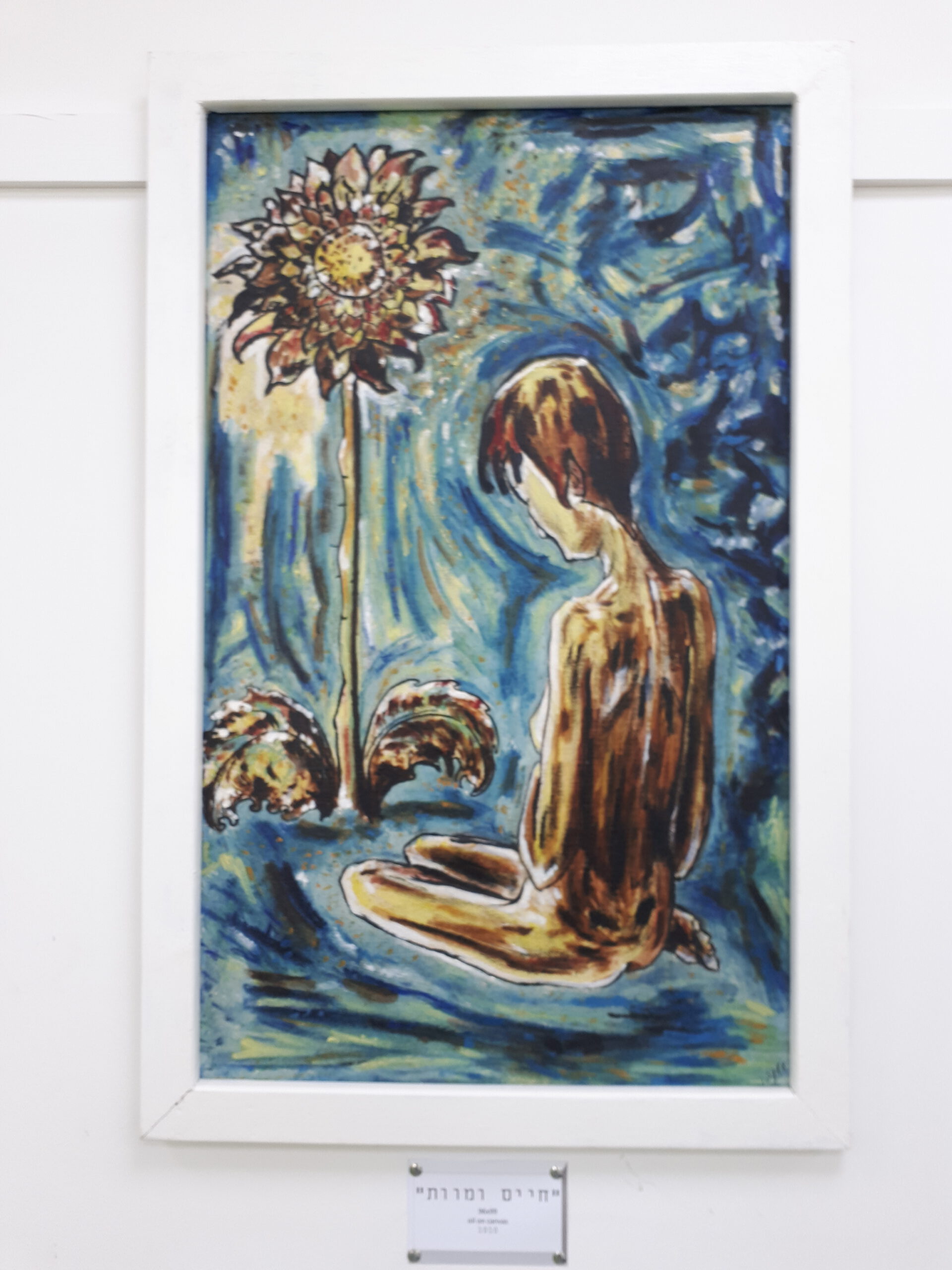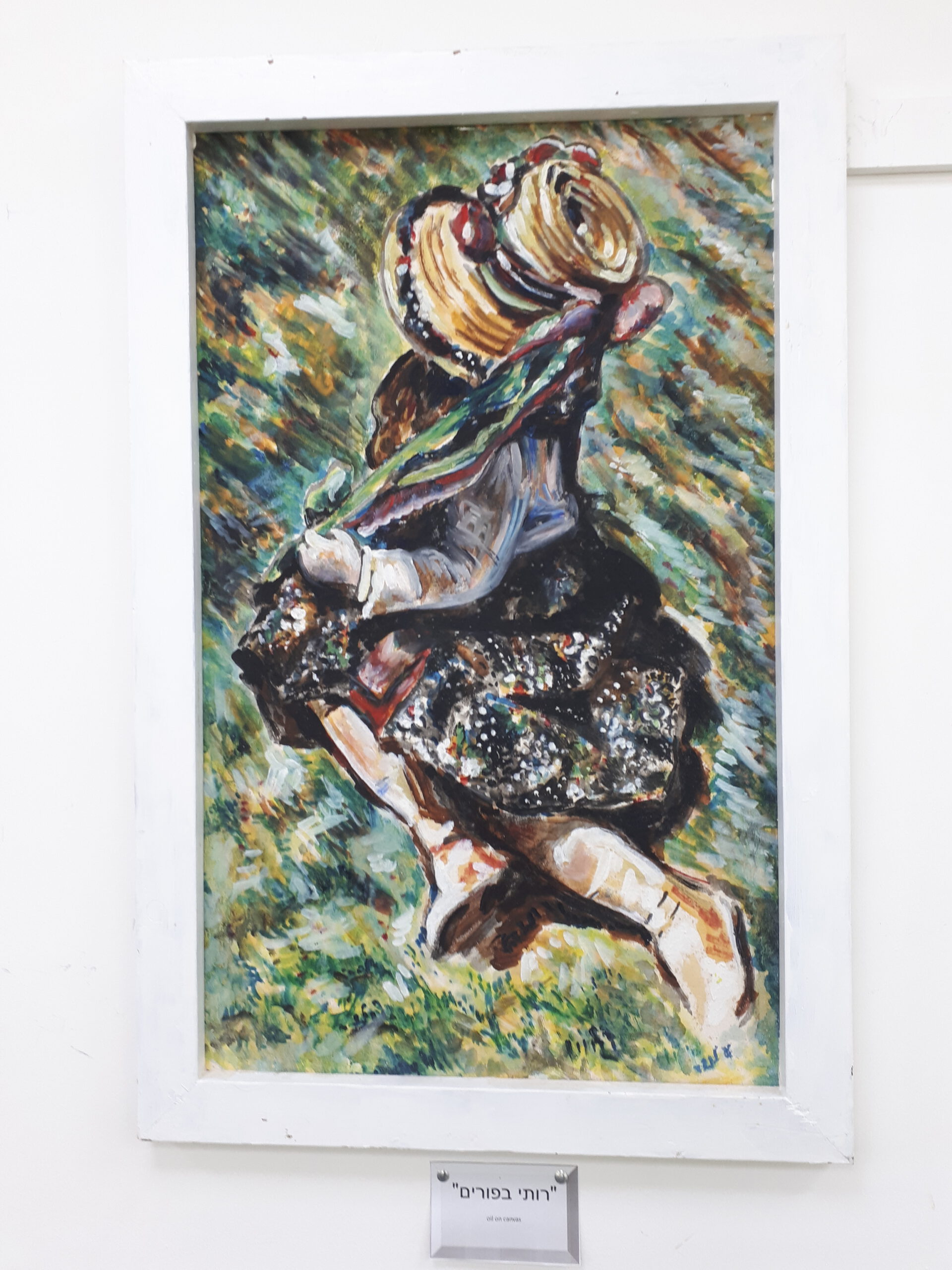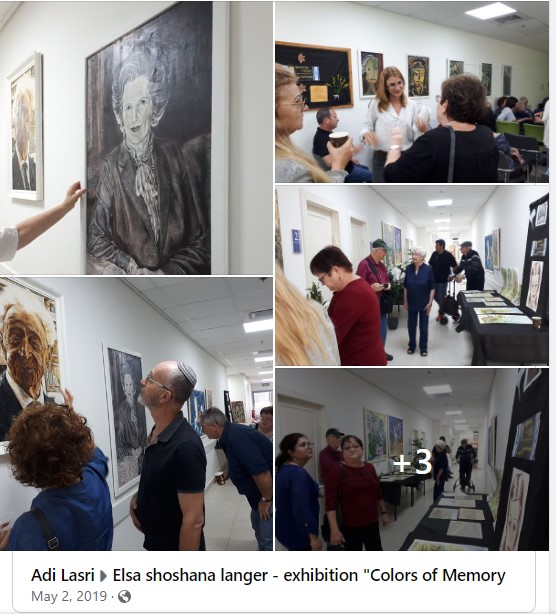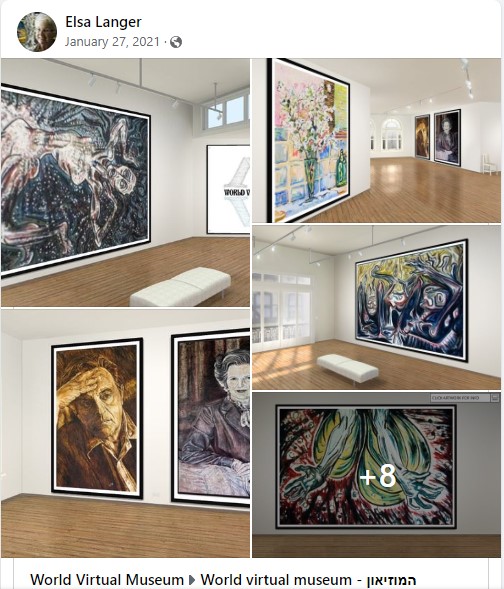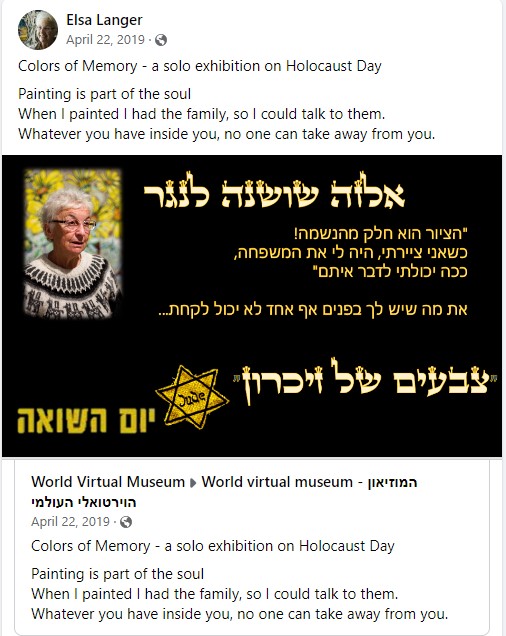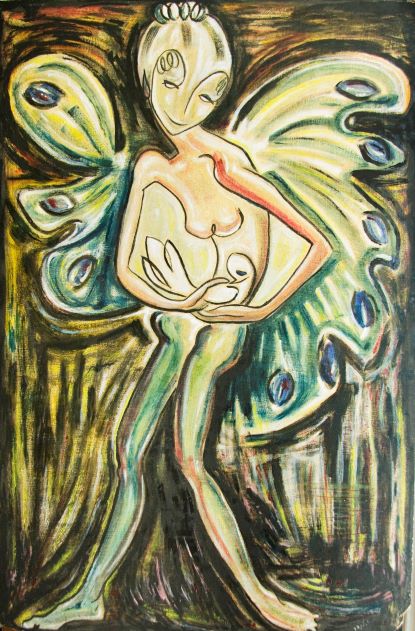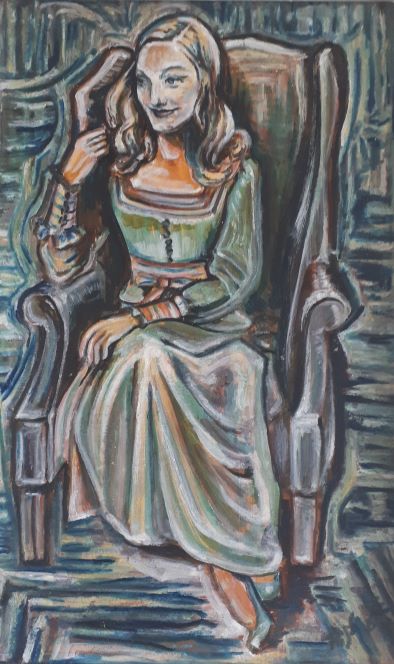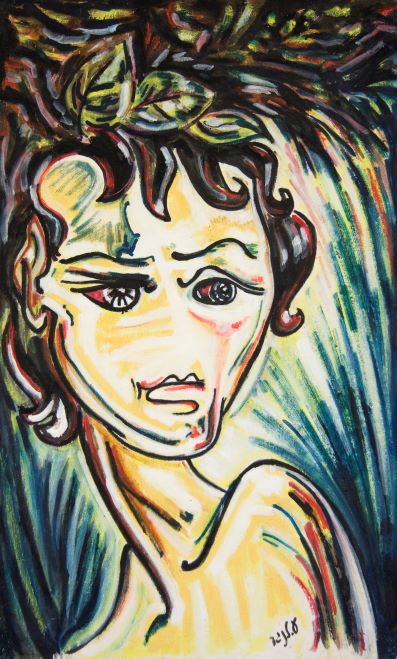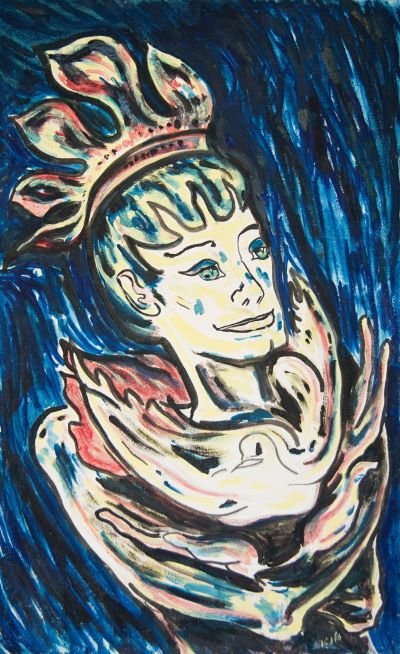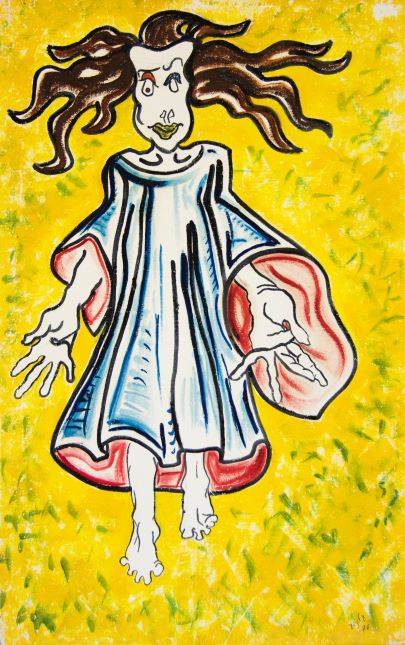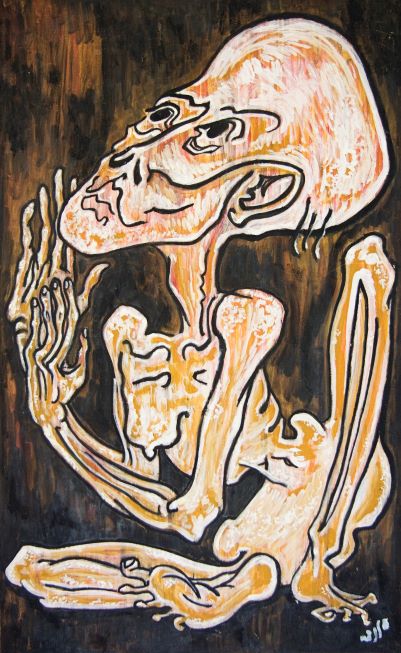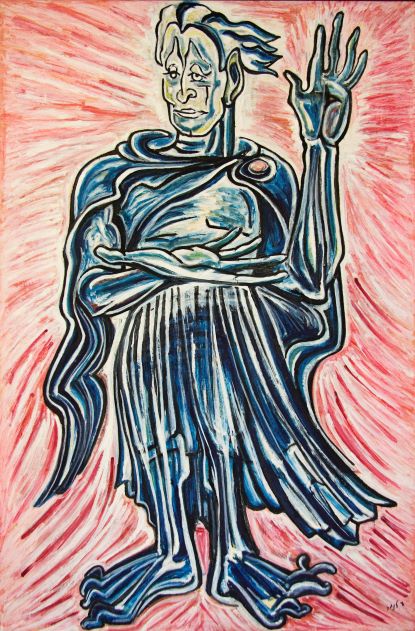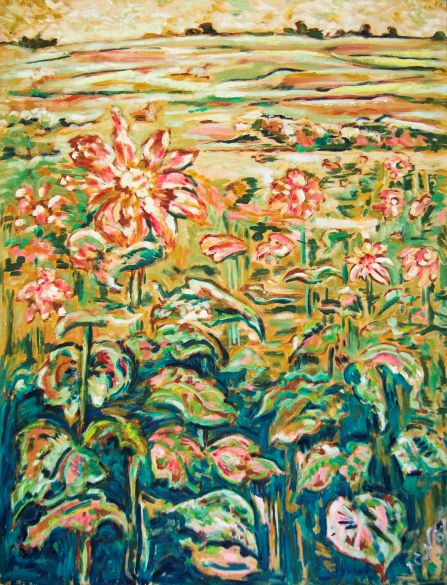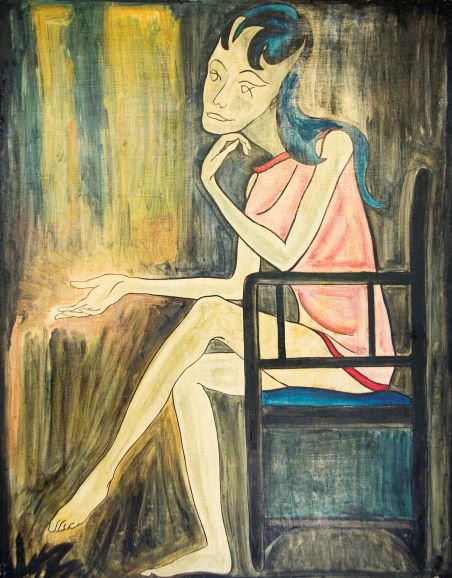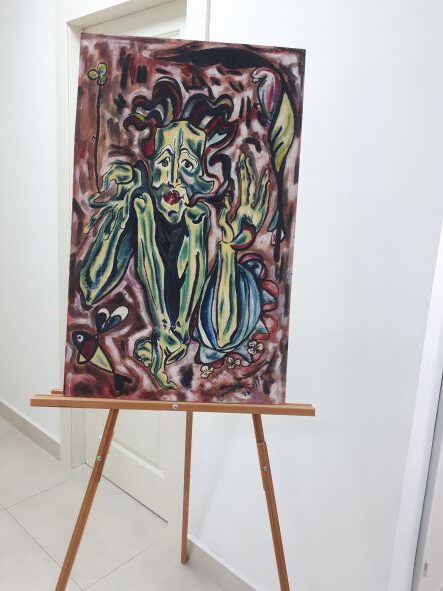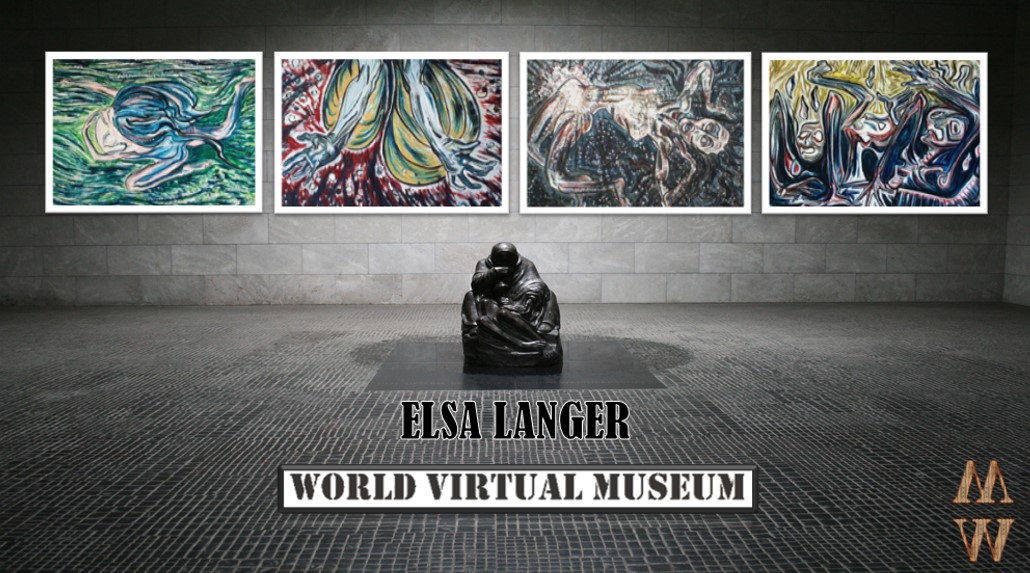
Elsa Langer
(1933-2018)
Painter
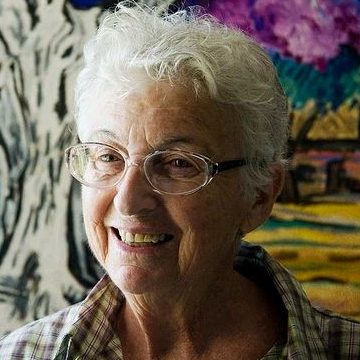
Biography
Life Events
1933 Born in Austria or possibly Germany 1944 Arrival in Uruguay after the Holocaust
1947 Began to take private lessons from the brothers Alceu and Edgardo Ribeiro of the Torres Garcia School (Dada movement) in Montevideo, Uruguay
1948 Studied sculpture in school in Montevideo
1949-50 Studied painting in the University of Bellas Artes, Montevideo under the Uruguayan master Felipe Seade
1955 Studied technical and abstract painting from the artist Enrique Rondeau
1958 Passed the exam to be an art and technical drawing teacher. Taught in elementary and highschools in Montevideo, until she immigrated to Israel
1970 Made Aliya to Israel
1992 Taught art in a youth cultural center in Ariel, Israel
2002 Taught art in “Beit Eyal” hostel for mentally disabled, Karmiel, Israel
2007-08 Studied Philosophy in Buenos Aries, Argentina; she lived with her daughter during this time
2009-Date Residing in Haifa, Israel and continued to paint and teach art
Sole Exhibitor
1966 Ateneo de Montevideo, Uruguay
1967 Argentino Hotel, Piriapolis, Uruguay
1968 Country Club, Lagomar, Uruguay
1969 Country Club, Lagomar, Uruguay
1970 Kibbutz Sarid, Israel
1975 Community Center, Dimona, Israel
1993 Youth Cultural Center, Ariel, Israel
1998 Nahariya Cultural Center, Israel
2010 Haifa Cultural Center, Haifa, Israel
Group Exhibitions
1950 UNESCO Exhibition 2000 Group exhibition: “Peace”, Rio de Janeiro, Brazil.
2002 Group exhibition in the art gallery of Karmiel municipality, Israel.
2011 Group exhibition: “Childhood”, Tel-Aviv, Israel.
2011 Group exhibition: “The star of David – from the yellow patch to David Shield”, Tel-Aviv, Israel.
Artistic Accomplishments
• Self-portrait in the “Yad-Vashem” art museum, Israel
• Three paintings in the Rabbinate Authority in Ariel, Israel
• Two paintings in the institute for Holocaust survivors, Ma’alot, Israel
• Four paintings in the hospice “Beth el tzedakah” in Shavei-Zion, Israel
• Fresco painting in Lagomar Country Club, Uruguay
• Wall decoration for an elementary school in Montevideo, Uruguay
• Scenography for the theatrical play ‘’En Familia” by Florencio Sanchez, Piriapolis, Uruguay
• Wall decoration for a children’s day care “Lili”, Ariel, Israel
• Wall decoration for the children’s ward in the Ramos Mejias hospital, Buenos Aries, Argentina
• Cover design for a book by Samuel Pecar, Escuela en el Sinai, AIELC, Tel Aviv 1998
(The paintings photographed by Peter Frank, RubiArt)
Colors of Memory – a solo exhibition by Elsa Shoshana Langer on Holocaust Remembrance Day 2/5/19
Colors of Memory – a solo exhibition link
Holocaust Day
“Colors of memory”
Article: Adi Lasri
The story of Elsa Shoshana Langer, a Holocaust survivor, is a tragic one.
Her amazing paintings reveal her path from the loss of her family, to a life of faith and hope.
Elsa was born into a religious Jewish family in 1933 in Vienna, Austria. Her parents, Aaron and Hilda Sokolowski, gave her the name Hydrilka. She had an older brother named Arnold. Her father was a biologist at the University of Vienna.
In 1940 Hydrilka’s parents managed to smuggle her brother, Arnold out of town. All contact with him from that time was lost and they were unable to get back in touch with him.
In 1941, the Nazis came to their home and murdered her Jewish grandmother, while little Hydrilka hid under a table. Shortly afterwards, the rest of the family: grandfather, father, mother and Hydrilka, were taken to the Theresienstadt concentration camp and from there they were transferred to Bergen-Belsen – where Hydrilka became infected and became ill with typhus.
For Hydrilka and her family, the horrors of the Holocaust lasted nearly three years.
Perhaps because of her father’s work, a “passport suit” was arranged that allowed the family to leave Bergen-Belsen and travel to South America, arriving first in Paraguay and later in Uruguay. Her father left for Chile for work. The correspondence through correspondence lasted for a while, diminished, and was finally severed.
Hydrilka was left with her grandfather and mother. They hid in a small room and the grandfather would tell Hydrilka stories that enriched her world, encouraged her spirit and allowed the little Hydrilka to sail imaginatively beyond the confines.
Unfortunately, however, although Hydrilka’s grandfather tried to overcome his wife’s murder at the hands of the Nazis, in the end despair increased and led her grandfather to take his own life and hang himself.
As a result, the mother left the house with Hydrilka and for several weeks they wandered the streets destitute. The mother finally placed herself and her daughter on the railroad tracks, seeking to end their lives.
Her mother died from being run over by the train, but Hydrilka survived with broken bones, scarred body and soul.
In 1944, when Hydrilka was around 11 years old, still recovering from the surgery, she was given up for adoption by a Catholic family, who gave her the name Elsa Shoshana Garcia (after their daughter who died several years earlier).
The adoptive family did their best to conceal and hide Elsa’s previous identity. Speaking German was strictly forbidden at home and for every stumble Elsa was severely punished.
This was where her art was born.
Every day Elsa would find pieces of paper on which she could paint the faces of the family that Elsa was forced to forget. Unable to express herself in speech, Elsa began to draw from her imagination and the fragments of her memories everything she had been through as a child.
In 1947, Elsa began taking painting and sculpture classes.
As Elsa grew older, she noticed a difference: she did not resemble her adoptive family, who were dark-skinned compared to her. Therefore, whenever she was allowed to go out, she was smeared with a dark cream to blur the difference and so as not to attract attention. Also, while her family’s mother tongue was Spanish, Elsa’s language was German and Yiddish.
At school, when Elsa was drawing trees, the teacher asked her: Where have you seen such trees? “There are no such trees in our country” ….
The confusion in Elsa’s life was great. At the age of 33, her adoptive family revealed to her that she was adopted and that her mother was Jewish – and that broke her.
Much of her past was an elusive shadow until 1965. A conversation with a colleague, who knew her adoptive family, confirmed to Elsa that she was adopted and Jewish.
In search of her family, Elsa went out and came to the Montevideo constituen – where she found the house where she lived with her mother and grandfather. The shopkeeper remembered her mother and told her that her last name was Sokolowski.
Hoping to find her brother Arnold, Elsa immigrated to Israel in 1970. The people of the kibbutz where she was staying gave Elsa a new Hebrew name, “Aliza,” even though at the time it was a name that did not reflect her mental state.
In 1971 Elsa married and later became the mother of two children.
Elsa Langer has lived in Haifa for the last few years, painting and studying art.
Although she has no record of her childhood, Elsa’s life journey is constantly documented by her ideas and paintings, moving from destruction and despair through life and light. The vibrant colors of her current works – testify to her victory and that she lived her life in faith and hope.
“Painting is part of the soul!” When I painted, “said Elsa,” I had the family, that way I could talk to them, what you have inside no one at all to take … “.
On May 2, 2018, Elsa passed away at the age of 85.
Elsa and I lived in a neighborhood in Haifa, we took care of the shared garden together and even though our relationship lasted only a few months, it was strong and Elsa felt free to reveal to me the exciting and fascinating story of her life. Before her death, Elsa sought to hand over to me all her paintings, which are in fact the enterprise of her life.
I believed with all my heart that Elsa’s special artworks should be displayed in a Holocaust museum in Israel.
I asked a number of museums to donate some of the artworks and make an exhibition for Elsa’s memory and tell her story, but in reply I was told that there is no place to hold an exhibition in her memory, but the works can be kept in a warehouse.
As a result, I decided to take action, and give Elsa a respectable place to present her works and tell her story that must be remembered and heard.
I founded the World Virtual Museum.
